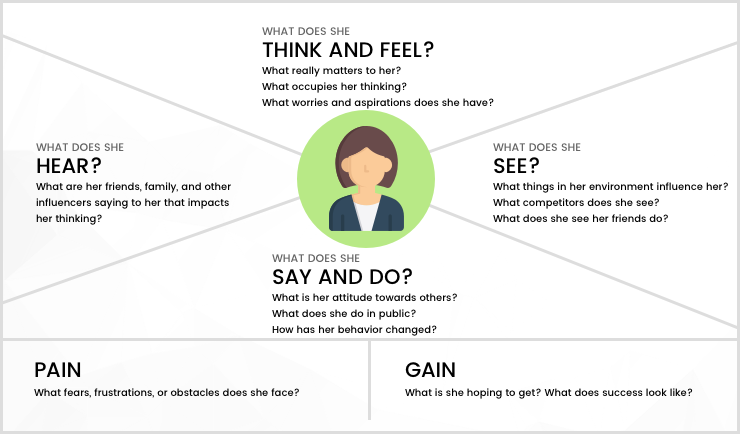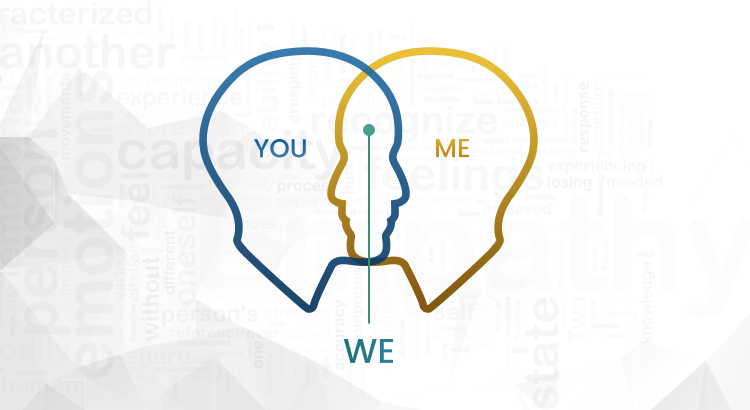Are you an empathetic UX designer?
If you had asked me that three years ago, I’d have parried the question saying I catered to users’ needs as a UX designer and resolved their pain points. Surely that qualified me as empathetic?
Fortunately for me, I got some perspective into this when I started working on a medical application as a UX consultant. The application was for medical researchers to enroll patients and collect data for their study. My Team Lead and I got down to brass tacks and started off with user research. We created the scenarios, analyzed tasks, developed wireframes, reviewed the graphic designs, and tested the usability of the application.
The client was pleased with the progress we were making and the quality of the deliverables. In one of our routine phone calls with the client, we moved beyond graphics and aesthetics and got into an interesting discussion on the emotions of users. It struck a chord with me and led me to explore the role of human emotions in design. There began my tryst with empathetic UX design.
What Is Empathy?
Let us nail the concept of empathy before we move on to empathy in the context of user experience (UX) design. The Oxford English Dictionary defines empathy as "the ability to understand and share the feelings of others." Now, that’s simple enough!
Let us not confuse empathy with sympathy though. Sympathy is feeling sorry for someone, while empathy is being able to feel what that person is going through. Sympathy creates distance between people, while empathy removes it.
Why Empathy in UX?
It begins with the rule of thumb in UX: You are not your user. No matter what experience you think you evoke, it’s the actual feeling it evokes in your user that matters. The challenge is to be aware of the fact that your perceptions of user needs and actual user needs will always be at variance.
Sometimes, even the users will not be able to reflect on and articulate their needs. As a designer, you need to go beyond what is conveyed by users and dig deep for more. And that is where the concept of empathetic UX design fits in. It respects the users and acknowledges the limits of the designer in grasping the realities of the users.
Empathy in design thinking means going the extra mile to understand users’ emotions, goals, motivations, and pain points. It takes time and effort. However, it’s time well spent if you are targeting user delight rather than a mere satisfying experience.
Empathy makes us better designers. Building an emotional connection with users can help us understand their frustrations with the system better and design more effective solutions. It drives us to leave our own comfort zones behind, think out of the box, and see through the foggy details. And users can always tell when a product has been built with love. They will love you for it, trust you, and stay with your brand.
Apple–A Shining Example of Empathetic UX Design
Remember the Steve Jobs movie? Jobs (played by Ashton Kutcher) tells his team, “I want everyone to design something new. I don't care what it is. I don't care if it's technology. Just create something. Something useful. Something you care about.”
The reason why Apple is still the most sought-after brand 10 years after their first iPhone is because of their empathetic product designs. This way Apple performs better—they sell more products, have happier customers, and end up as the extraordinary brand that they are today. Similarly, companies that want to wow their customers spend a lot of time brainstorming their design decisions.
Steps in Empathetic UX Design Process
Let's take a look at the steps involved in an empathic UX design process.

1. Observe
In this step, we need to identify the end users and observe their behavior, body language, facial expressions, and emotions while they use a product or application. Audio or video recording can be used during this phase to capture the data.
2. Capture Data
Along with the audio or video recordings, we can interpret the users’ actions. Questions such as why a particular action was done in a particular manner, what problems or challenges were faced while the product was being used are helpful.
3. Analyze
At this point, the design team should be able to identify and understand all the users’ needs and problems. The Empathy Map can be a guide for designers to work them out. It puts the user and the product in context and helps analyze the users’ reflections and the factors that shape those reflections.
[caption id="attachment_17272" align="alignnone" width="740"]

The Empathy Map helps you understand your users’ multidimensional realities better.[/caption]
4. Brainstorm
An open discussion is led by one particular member of the team who notes down the thoughts and ideas of others while trying to keep the process flowing. This stimulates idea generation, which can lead to solutions to specific problems that the users’ face.
5. Prototype
This involves transferring ideas generated during the brainstorming sessions into a prototype. The core concepts of the product are clarified and the prototype is shared with the development team. During the development process, functionalities can be implemented for those components that did not work initially or have the potential for further improvement once tested with end users.
6. Test
The prototype is put to test to ensure it meets user goals and expectations. While testing with users, we need to collect feedback on the pros, cons, the areas of difficulty as well as suggestions for improvement. User reaction and behavior are closely observed as in step 1.
Based on the feedback, we go back to step 1 (Observe) and repeat the process until we have refined the product to meet or even exceed user expectations.
Tips for Empathetic UX Designers
How can we UX designers empathize with our users when we work on tight schedules and don’t have the time to do extensive user research? Practicing empathy in our everyday lives and in our work is a good start:
- Talk to as many people around you as possible and gather their experiences.
- Expand your social circles. Pay attention to conversations in those circles.
- Observe and understand the everyday pain experienced by people around you.
- Pick out both verbal and nonverbal cues in everyday communication.
- Always be open-minded. Never let biases creep into your thinking.
- Accept what you see and hear even if it contradicts your own views on the topic.
- Remove distractions and withhold judgment while listening.
- Try to experience many things on your own.
Conclusion
User experience is ultimately co-created by the designer and the user. Thousands of users means thousands of different experiences—every experience being equally valid. An empathy-driven UX design ensures that the experience you create will be inspiring and pleasurable for most of those users. At QBurst, we care about each of those experiences and believe in creating for specific user needs. Check out our UX Design Services to learn more.

 The Empathy Map helps you understand your users’ multidimensional realities better.[/caption]
The Empathy Map helps you understand your users’ multidimensional realities better.[/caption]

